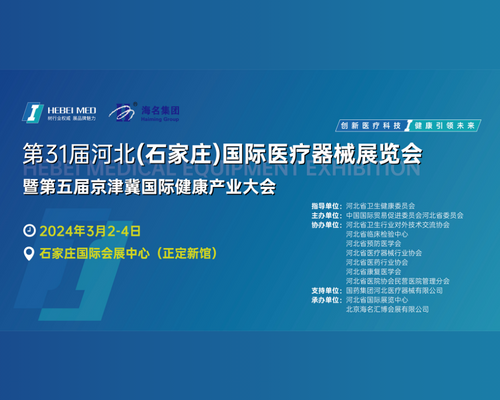医疗设备巨头西门子医疗5月10日意外宣布,将终止其心脏介入手术机器人的业务。该决定是在公司公布了大幅下降的第二季度利润后宣布的。
西门子医疗表示:“我们始终相信介入手术机器人技术将在未来血管治疗中发挥重要作用。然而, 机器人在心脏介入领域的应用落后于我们最初的预期。经过过去几个季度的分析决策后,西门子医疗决定停止CorPath GRX途灵(Corindus)介入手术机器人在心脏冠脉领域的业务。”
该公司还称:“西门子医疗仍将继续进行神经介入手术机器人的研发,已经开始着手开发新一代的机器人平台,希望得以在关键的卒中发病早期,为患者带来有效的治疗。”
此消息一出,一石激起千层浪,迅速引起行业内人士关注,血管介入机器人行业掀起大论战!
对于血管介入手术机器人,笔者也在前几日发表的文章(《关于手术机器人赛道的几点思考》可点击查看)中提到了自己的思考。
血管介入手术机器人是否会成为下一个内卷主战场?对于血管介入机器人,医疗器械行业人士是存在不同认识的,有的专业人士认为血管介入机器人是“脱衣战士”,能够降低手术操作医生的射线暴露,提高手术效率,不过又有专业人士发出不同的声音,认为目前血管介入手术机器人实际上并不适合我国实情,医生群体对于血管介入机器人的需求并不像宣传里所提及的那么大,而且血管介入类的耗材器械种类繁多,血管介入机器人只能对数量较少的器械进行输送,运用范围有限。但是不管怎么样,不论是切实解放医生群体的好产品也好,还是能够撬动资本讲故事的好产品也罢,血管介入手术机器人就是这样来了。
笔者认为,对于西门子Corindus途灵血管介入手术机器人,我们应当心存感谢。
是西门子这样的大厂率先挖掘了血管介入手术机器人的市场潜力,在医疗器械领域公认的“带头大哥”的引领下,我们自信的聚焦于从事于血管介入手术机器人,大部分研发初始的产品竞标和对照就是西门子Corindus途灵手术机器人,在国内激烈的内卷行情的洗礼下,各大血管介入手术机器人八仙过海,各显神通,不断的产品迭代,挖掘临床痛点,已有产品实现了“青出于蓝而胜于蓝”,在我们血管介入机器的人技术发展路径上,我们真的应当对西门子Corindus途灵手术机器人道一声感谢。
现在,西门子Corindus途灵手术机器人主动退出市场竞争,一石激起千层浪,把当下血管介入手术机器人的现状照进现实,撕开了当下血管介入机器人临床痛点解决不利的面纱。不管舆论再怎么看再怎么说,笔者认为国内当下血管介入手术机器人各大厂家一定还会继续将血管介入机器人做下去,虽有微调但目标一定不会变,保持这份定力和决心的一定是自信于自家产品和技术的先进性,这种先进性的实现一定会加快,这正是临床痛点被放大之后的反馈。与其遮遮掩掩,不如痛痛快快的去面对,去克服这个挑战,从这一点上我们也应当对西门子Corindus途灵手术机器人说一声谢谢。
而且,西门子家大业大,放弃某一管线实际上对其影响是可控的甚至是不大的,但是对于我们的血管介入机器人厂家来讲是做不到的,既然当下的大环境不允许我们厂家去任性,那么在血管介入手术机器人带头大哥的退出之下,是不是少了一个大竞争对手,有了更好的逐鹿中原的机会,笔者认为切实做好产品和技术的先进性机会还是很大的。
其实,西门子并未放弃Corindus途灵手术机器人,而是退出了PCI领域,人家也明确说了,会继续做研发,聚焦于神经外科介入手术机器人,做产品的颠覆,可见人家还是保留了重回赛道的基础的,这个基础就是产品和技术的先进性,说不定哪一天来个王者归来都不好说。而且笔者可以肯定的说,西门子Corindus途灵手术机器人的专利布局一定不会停止,在这个赛道上国内各大血管介入手术机器人厂家依然会感受到“带头大哥”的威慑力,国内各大血管介入机器人厂家不能被带乱了节奏,要时刻保持警惕,保持一颗敬畏产品和技术的心。
最后我们还应当感谢西门子一点的是,西门子又挖掘了一个新赛道,神经外科介入手术机器人,我觉着这颇像热门作品的“未完待续”或者下一季的“彩蛋”,对于吃瓜群众的我来讲,真的是欲罢不能,对于NVI领域的血管介入手术机器人,我们是不是可以关注起来了,虽然西门子说"那将是几年以后的事情",但是未雨绸缪起来总没有错。不过,西门子押宝神经领域手术机器人就一定是正确的道路么,我们拭目以待。
Corindus途灵介入手术机器人技术起源于以色列,以色列海法医院成功研制出用于心血管介入的手术机器人Remote navigation system(RNS),该系统采用多组摩擦轮分别递送导引导丝和球囊支架导管,并首次开展了临床实验。2012年美国医疗机器人公司Corindus Vascular Robotics使用RNS技术开发的初代产品Corpath200获得了FDA批准上市用于PCI,又于2016年第四季度Corindus的二代产品CorPath®获得了FDA批准上市用于PCI。
值得注意的是,2019年8月8日,西门子医疗宣布以11亿美元收购Corindus Vascular Robotics,Corindus途灵介入手术机器人至此纳入西门子医疗旗下。
特别指出的是,西门子医疗的Corindus途灵最新一代CorPath GRX介入手术机器人还通过国家药监局器审中心的创新医疗器械特别审查申请,获准进入特别审查程序。
下图给出了Corindus途灵手术机器人(CorPath GRX)的产品实物示意。

CorPath GRX产品实物示意
CorPath系统是第一个获得 FDA 批准并获得CE标志的机器人平台,专为介入医生设计。在 CorPath 机器人辅助干预期间,该产品是由硬件设备及耗材组合使用的系统,通过医生坐在远程工作区使用操作杆或控制台上的触摸屏,实现介入设备的远程传输和操作。
Corindus途灵血管介入机器人整体系统图如下所示:

Corindus途灵血管介入机器人整体系统图
机器人装置是Corindus途灵手术机器人的核心部件之一,其主要包括及其支撑臂及其一次性Cassette。如下附图所示:

Corindus途灵血管介入机器人支撑臂系统图

Corindus途灵血管介入机器人一次性Cassette系统图
笔者通过视频的形式,给各位读者展示Corindus途灵血管介入机器人的技术组成和使用方法。(温馨提示:视频有背景音乐)
西门子Corindus途灵手术机器人做了全方位的系统专利保护。笔者从Corindus途灵血管介入机器人涉及的相关专利中择机选择了3组专利进行了解析,相关结果如下:
|
|
|
|
|
|
|
Remote control catheterization
|
|
|
Catheterization procedures are very commonly performed for diagnosis and treatment of diseases of the heart and vascular system. The catheterization procedure is generally initiated by inserting a guide wire into a blood vessel in the patient's body. The guide wire is then guided to the desired location, most commonly in one of the heart vessels or elsewhere in the vascular system. At this point the catheter is slid over the guide wire into the blood vessel and/or heart. Once the catheter is in the desired position, the guide wire can then be removed, leaving the catheter in location. Alternatively, in some procedures, the catheter is inserted without using a guide wire. The catheter may be used to pass ancillary devices into the body, such as an angioplasty balloon, or to perform other diagnostic or therapeutic procedures.
|
|
|
A remote control catheterization system (20) includes a propelling device (28), which controllably inserts a flexible, elongate probe (26) into the body of a patient (22). A control console (34), in communication with the propelling device, includes user controls (38, 40) which are operated by a user of the system remote from the patient to control insertion of the probe into the body by the propelling device.
|
|
|
|
|
|
|
|
|
|
|
Transmission for a remote catheterization system
|
|
|
To insert a catheter manually, the physician applies torque and axial push force on the proximal end of a guide wire to effect tip direction and axial advancement at the distal end. However, it is difficult to control the distal tip of the catheter from the proximal end. Although these navigation techniques are effective, they are tedious, require extraordinary skill, and result in long medical procedures that fatigue the user.
|
|
|
An apparatus for imparting motion from at least one of a plurality of motion sources into linear, rotary, or combined linear and rotary motion of an elongated device, the apparatus comprising a transmission for translating the motion to linear or rotary motion of the elongated device.
|
|
|
|
|
|
|
|
|
|
|
|
|
|
Before performing an interventional procedure with the disclosed invention, a diagnostic procedure is typically performed. An exemplary diagnostic procedure performed before performing a PCI may include a number of steps. Starting in the femoral artery, a 0.038 guide wire is run over the top of the aortic arch. A diagnostic catheter is advanced over the 0.038 guide wire after which the 0.038 guide wire is removed allowing the diagnostic catheter (DC) to return to its preformed shape enabling the DC to access either the left or the right ostium of the aorta. A contrast media is injected through the DC and the heart is x-rayed to identify the existence and location of any lesion. A y-connector may be secured to the end of the DC outside of the patient. The y-connector provides a means for introducing the contrast media or medication. The y-connector employs a one way valve both at the y-connector leg and the free open end. The 0.038 guide is then reinserted into the DC advanced over the top of the aortic arch, and the diagnostic catheter is removed. When the diagnostic is completed the 0.038 guide wire may be left in place for use in a PCI procedure.
|
|
|
A robotic catheter system is provided. The catheter system includes a housing, and the housing has a sidewall and a longitudinal axis. The catheter system includes a recess formed in the sidewall of the housing and a drive mechanism supported by the housing. The drive mechanism is configured to impart movement to a catheter device. The catheter system includes a first channel configured to receive a catheter device, and the first channel has a opening located within the recess.
|
|
|
|
笔者通过文献获知,CorPath GRX是途灵第二代机器人辅助系统,建立在 CorPath 200 临床成功的基础上,该系统在全球100多个项目中拥有约10,000多个案例。总结而来,Corindus途灵血管介入机器人具有如下性能优势:
① 复杂病例的临床成功,所有治疗病变的临床成功率为98.2%,CTO病例的临床成功率为99.1%。
② 减少对患者的辐射,与手动PCI相比,患者的辐射剂量降低了20%。
③ 减少支架使用,使用CorPath准确测量冠状动脉解剖结构可以将不必要的额外支架的使用减少8.3%。
④ 减少对医生的辐射,主要操作员的辐射暴露减少了95%。
本文著作权属原创者所有,不代表本站立场。我们转载此文出于传播更多资讯之目的,如涉著作权事宜请联系删除。
































